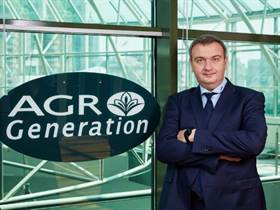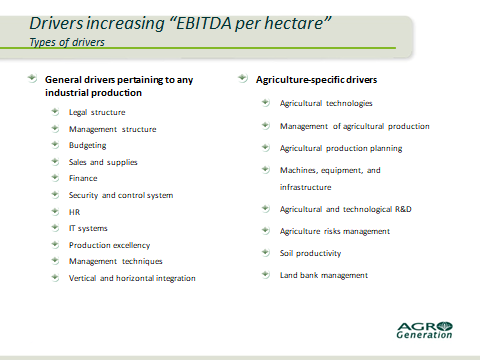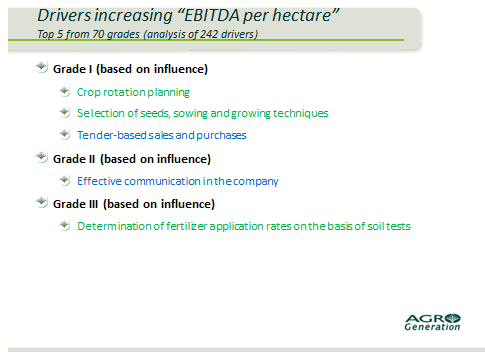
“EBITDA per hectare” is widely used to compare performance of agricultural companies. However, to be practically meaningful such comparison has to take into account a number of factors that are not directly related to performance of an agricultural company, but have a significant impact on the indicator and skew the comparison.
This opinion was expressed by Sergiy Bulavin, Senior Vice President of AgroGeneration, in his presentation “EBITDA per Hectare: an Agricultural Company’s Key Performance Indicator” at the ProAgro conference.
The factors mentioned above included:
- Financial and accounting specifics (differences in the available working capital, in the EBITDA/EBITDA Adjustments calculation approach, and in the biological assets revaluation approach);
- Regional specifics (soil, weather, crops, and land bank maintenance costs); and
- Level of vertical integration (what is the main source of added value concentration — crop farming or crop processing; to what extent is crop growing impartially separated from processing by the calculation of EBITDA).
The opinion stated that “EBITDA per ha”-based comparison becomes meaningful on the practical side only when its calculation is made on the basis of the same EBITDA Adjustments, when crop farming calculations are kept separately from other activities and are based on market prices (in case of vertically integrated companies), and when the impact of non-monetary factors is excluded. However, these factors demand such a degree of openness of the compared agricultural companies, to which they most likely won’t agree.
Sergiy Bulavin also emphasized that such comparison makes sense only if applied to agricultural companies with the same regional conditions, soil and weather specifics. Thus, he believes that “EBITDA per hectare” has a big practical value not for the comparison of agricultural companies, but for the planning of production (when used for the assessment of every crop’s contribution to the company’s overall EBITDA), of changes and additional efficiency (if a change has a positive impact on the indicator – it should be implemented, if it doesn’t – then it’s meaningless), and for the monitoring of the company’s development (seasonal comparison).



Following his research, Mr. Bulavin also presented drivers increasing “EBITDA per hectare”. He outlined general drivers pertaining to any industrial production and agriculture-specific drivers.
Link to the presentation: https://www.slideshare.net/SergiyBulavin/sergiy-bulavin-ebitda-per-hectare-presentation-on-the-conference-organized-by-proagro-november-10-2017
This article was originally written in Russian and translated into English by AgroGeneration
